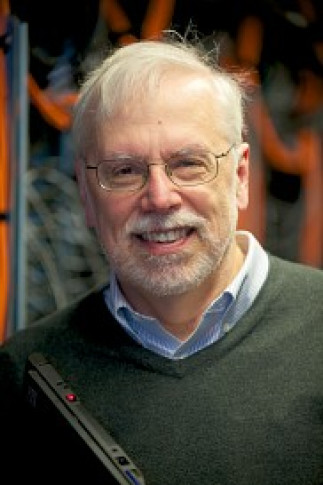Superconductivity in ultra-quantum matter: Part II, optimizing Tc
André-Marie Tremblay
Département de physique, Institut quantique, et RQMP
Université de Sherbrooke
Présentation en anglais
Vidéoconférence, Zoom #: 821 4868 3936 (Zoom link)
Lorsque demandé, indiquer 'huit quatre cinq deux' en chiffre.
Abstract: Superconductors based on CuO2 conducting layers (cuprates) are still model systems for future generations of materials that could be superconducting at ambient pressure and temperature. They are appealing on a fundamental level because they are strongly quantum-fluctuating compounds with spin one-half carriers, interaction strength that is comparable to kinetic energy and a single band crossing the Fermi level.
However, the single band crossing the Fermi level has both copper and oxygen orbital content. Since the interactions are mostly on the copper orbitals, the one-band Hubbard model, where the oxygen orbital content is neglected, has been very successful in explaining many of the observed properties. In this talk, it is shown that the oxygen orbital is a useful witness that gives insights into the mechanism of superconductivity in cuprates when it is taken into account.
Using cluster generalizations of dynamical mean-field theory [1] we explain three apparently unrelated experiments that suggest how to optimize Tc in cuprates:
1) NMR experiments that show that Tc is optimized by maximizing oxygen hole content [2]
2) Scanning Tunneling spectroscopy that shows that Tc is optimized by decreasing the charge transfer gap [3] and
3) Neutron experiments that show that Tc is optimized by increasing superexchange [4].
The unified explanation of these three experiments that is offered [5] also explains two other empirical observations as well as the mechanism for superconductivity in cuprates. The results suggest new avenues to discover compounds that superconduct at even higher temperature [6].
References
[1] C. Weber, C. Yee, K. Haule, G. Kotliar, EPL 100, 37001 (2012).
[2] Rybicki D, et al. Nature Communications 7:11413 (2016)
[3] Ruan W, et al., Science Bulletin 61(23):1826–1832 (2016)
[4] Wang L, et al. arXiv:2011.05029 ; also A. Keren, New J. Phys. 11 065006 (2009)
[5] Nicolas Kowalski, Sidhartha Shankar Dash, Patrick Sémon, David Sénéchal, and André-Marie Tremblay, PNAS (Proceedings of the National Academy of Sciences) 118 (40) e2106476118 (2021).
[6] Cedric Weber, PNAS, 118 (46), e2115874118 (2021)
Cette conférence est présentée par le RQMP.

